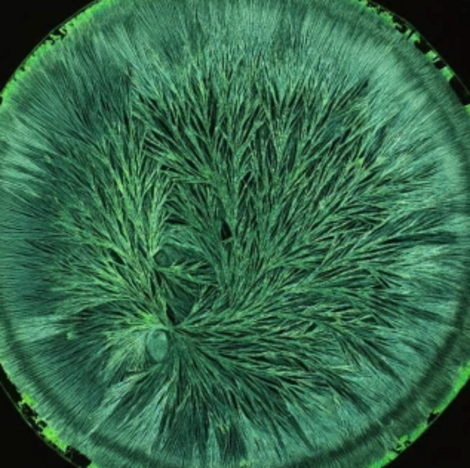In the image forming methods, copper chloride crystallization (CCCryst), capillary dynamolysis (CapDyn), and circular chromatography (CChrom), characteristic patterns emerge in response to different food extracts. These patterns reflect the resistance to decomposition as an aspect of resilience and are therefore used in product quality assessment complementary to chemical analyses. In the presented study, rocket lettuce from a field trial with different radiation intensities, nitrogen supply, biodynamic, organic and mineral fertilization, and with or without horn silica application was investigated with all three image forming methods. The main objective was to compare two different evaluation approaches, differing in the type of image forming method leading the evaluation, the amount of factors analyzed, and the deployed perceptual strategy: Firstly, image evaluation of samples from all four experimental factors simultaneously by two individual evaluators was based mainly on analyzing structural features in CapDyn (analytical perception). Secondly, a panel of eight evaluators applied a Gestalt evaluation imbued with a kinesthetic engagement of CCCryst patterns from either fertilization treatments or horn silica treatments, followed by a confirmatory analysis of individual structural features. With the analytical approach, samples from different radiation intensities and N supply levels were identified correctly in two out of two sample sets with groups of five samples per treatment each (Cohen’s kappa, p = 0.0079), and the two organic fertilizer treatments were differentiated from the mineral fertilizer treatment in eight out of eight sample sets with groups of three manure and two minerally fertilized samples each (Cohen’s kappa, p = 0.0048). With the panel approach based on Gestalt evaluation, biodynamic fertilization was differentiated from organic and mineral fertilization in two out of two exams with 16 comparisons each (Friedman test, p < 0.001), and samples with horn silica applicat: Samples with horn silica application were successfully identified in two of two studies with 32 comparisons each were successfully identified in two out of two exams with 32 comparisons each (Friedman test, p < 0.001). Further research will show which properties of the food decisive for resistance to decomposition are reflected by analytical and Gestalt criteria, respectively, in CCCryst and CapDyn images.
Keywords: Copper chloride crystallization / Capillary dynamolysis / Kinesthetic engagement / Perceptual strategies
The entire study can be read under the following link: https://link.springer.com/article/10.1007/s13165-021-00347-1
Athmann M., Bornhütter R., Busscher N., Doesburg P., Fritz J., Geier U., Köpke U., Mergardt G. und Scherr C.: Un update on image forming methods: structure analysis and Gestalt evaluation of images from rocket lettuce with shading, N supply, organic or mineral fertilization, and biodynamic preparations. Organic Agriculture 2021.
